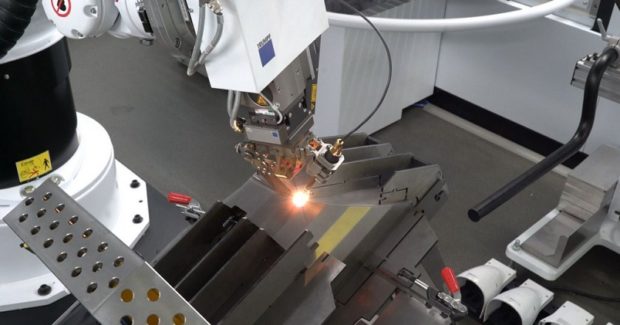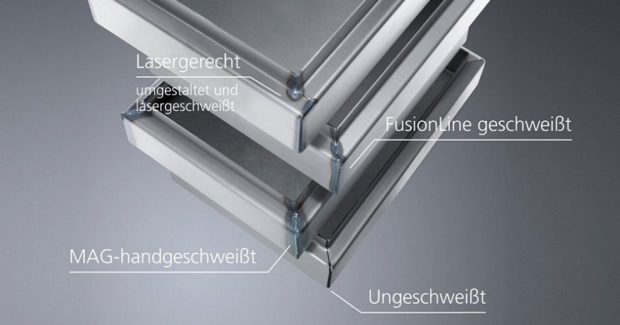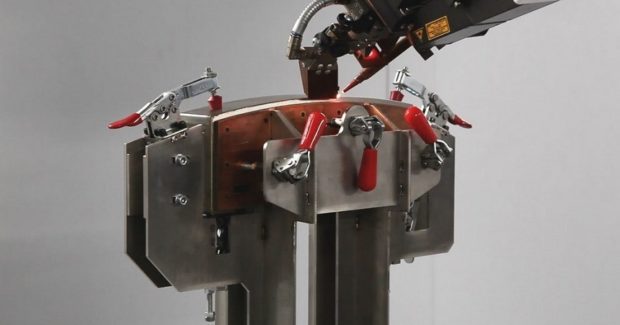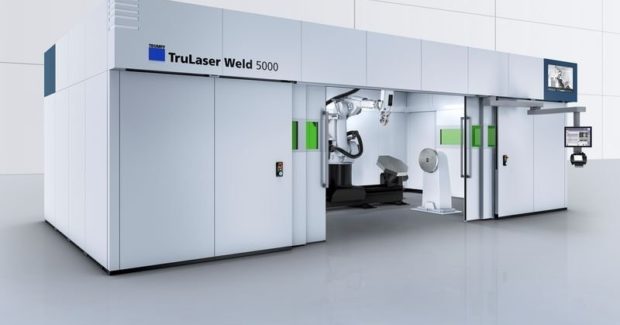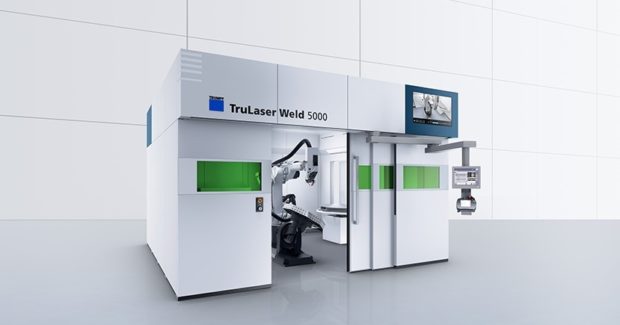Laser Welding Cell Forgives Imperfections
Getting started with laser welding is now easier than ever before thanks to tolerant laser welding with FusionLine technology from TRUMPF that allows for the welding of components with gaps for even simpler operation.
Posted: January 3, 2019
Laser welding offers numerous advantages over conventional techniques, including better weld quality, a robust bond and faster processing times. The TruLaser Weld 5000 from TRUMPF Inc. (Farmington, CT) is a laser welding cell that greatly simplifies the laser welding process for experts and beginners. Laser welding is known for its perfect results and high quality visible seams, but preparing components for laser welding calls for specific expertise with as little tolerance as possible in the design – or at least that is how things used to be. Now FusionLine technology makes it possible to overcome component imperfections in the welding process and close gaps up to 0.04 in wide. At the same time, its welding seam and processing times significantly outperform those of components processed using conventional welding techniques. This means users can take advantage of the perfect combination of laser beam guidance, optics and a weld feed system to perform cost-effective laser welding operations even if their component portfolio is not optimized for laser welding.
It is now possible to laser weld an array of parts developed for conventional welding without having to modify them so that users can manufacture parts according to the drawing and laser weld a larger array of parts than ever before. Users also retain full flexibility, easily switching between FusionLine and the conventional laser welding techniques of heat conduction and deep welding, with no need to reset the machine. This way, shops can manufacture one-part runs that aren’t worth modifying for laser welding with FusionLine, then process a subsequent run using heat conduction or deep welding. Users can also switch between techniques on the same component. Shield gas used in laser welding ensures as oxide-free a weld as possible. In the past, shield gas was introduced by a four-finger nozzle fixed to the processing optics, meaning the entire laser head had to turn whenever there was a change in direction. But with the rotary module, the TruLaser Weld 5000 features a movable nozzle that rotates around the optics for faster welding times.
This version of the laser welding cell features the striking cube design and comes with a swiveling support arm for the control panel that improves the ergonomics and handling. On the exterior, the TruLaser Weld 5000 is fitted with a status light that provides an immediate assessment of machine status. The laser welding unit operates using a TruDisk laser that can also power other TRUMPF machines, such as a 2D laser system. In a laser network, several machines share a single laser and significantly reduce the initial investment cost of a new machine.
TRUMPF Inc., 111 Hyde Road, Farmington Industrial Park, Farmington, CT 06032, 860-255-6039, www.us.trumpf.com.


